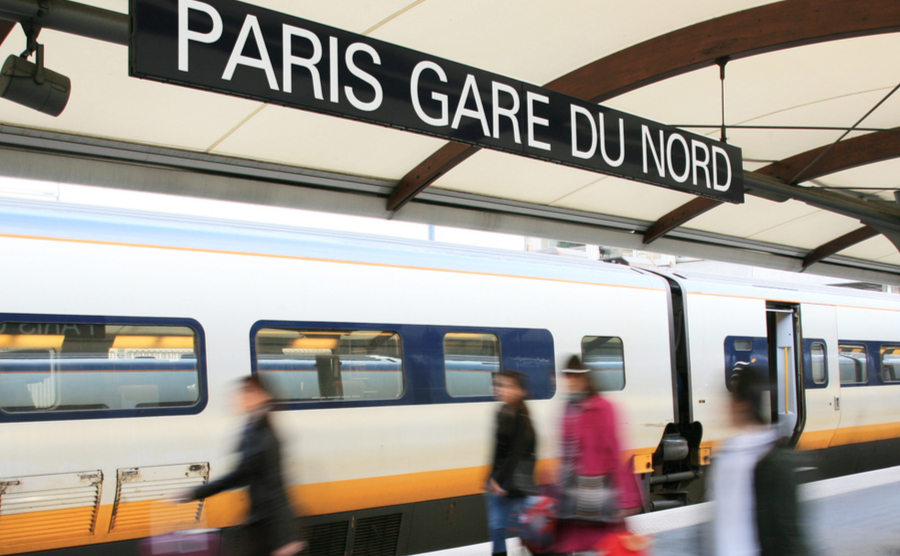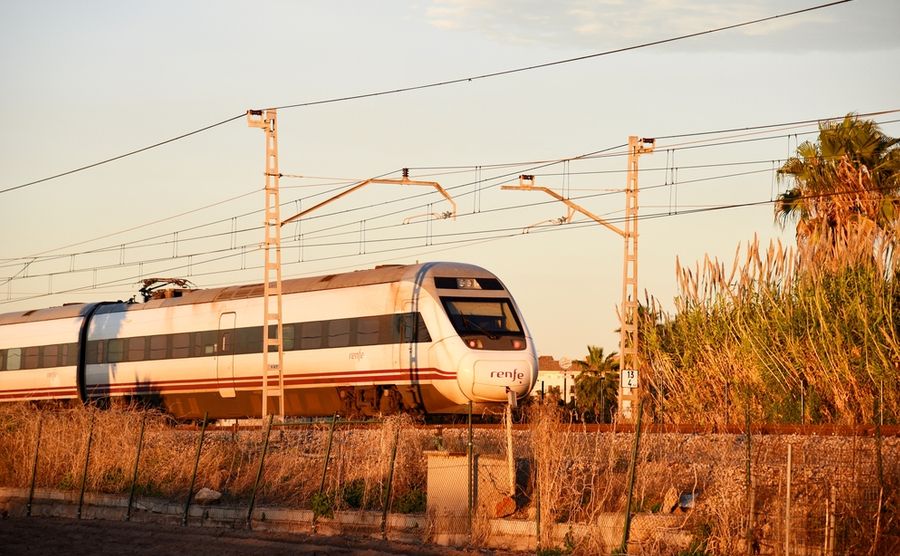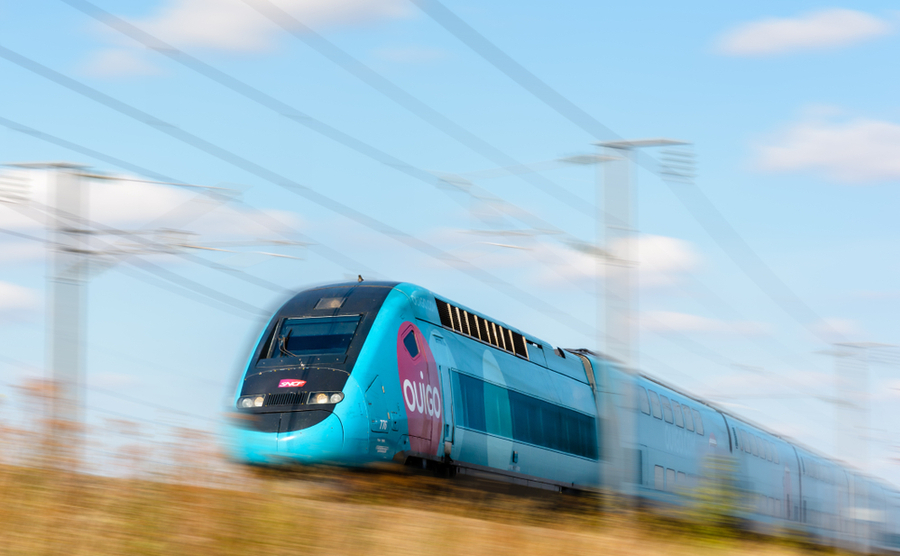Is there a more comfortable way to travel abroad than by train? Not forgetting it is greener than flying and driving, so it’s guilt-free too. We make a case for using Europe’s praiseworthy rail network for trans-continental travel, including trips to your second home in the sun – even if you do it just occasionally!

Paris North Station, Gare du Nord, France.
Almost a century after the railways’ golden age of the late 1920s and 1930s, an equally exciting renaissance is happening in continental train travel today. And the good news is expats and second homeowners are ideally placed to benefit from it!
Following decades in the shadow of cheap flights, recent years have seen the introduction of low-cost high-speed trains serving an ever-widening web of European cities. As well as the re-launch of sleeper services and a general drive to cut travel times and keep fares highly competitive. Governments across Europe are pledging huge amounts of investment to upgrade rail networks, considered vital for making travel cleaner in the long-term. And the EU has announced plans to double its spending on high-speed rail by 2030, with a focus on improving cross-border services and booking systems. It also wants to facilitate foreign operators, to drive competition and bring more choice to travellers. Which is all good news for anyone who travels across the Channel frequently.
Solution to sustainability
The need to reduce flights, cut carbon emissions and fulfil the Green Deal – to make the EU climate neutral, is the principal driver of the rail revival. The figures speak for themselves: aviation accounts for 13 per cent of all EU greenhouse gas emissions compared to rail travel’s 0.4 per cent. Per passenger, rail travel generates less than 1/20 of the CO2 emissions of air travel and approximately 1/7 of the emissions of car travel. Short-haul flights are especially bad for the environment. Flying to Paris from London generates at least 10 times more emissions than taking the train to the French capital.
France is championing the rail re-birth and in May this year introduced a ban on all short-haul domestic flights less than two-and-a-half hours where the route is also served by a regular rail service. The rule has got rid of air trips between Paris Orly airport and regional hubs such as Nantes, Lyon and Bordeaux. Similar moves are being considered by Spain, Germany and Norway.
Trailblazing the cause is Eurostar Group, a leader in carbon neutral rail travel which aims to increase annual passenger numbers to 30 million by 2030, compared to 19 million in 2019. This year they announced their plans “to spark a new golden age for high-speed rail connectivity in Europe, continuing to convert road and air travellers to rail at a time when passengers are keen to have greener travel options”.
Why rail can’t fail!

Spain property buyers – Renfe has you covered.
Besides reducing your carbon footprint, there are of course more self-indulgent reasons to travel by rail. Fewer queues, less intense security checks and no requirements for ridiculously early check-in times make it less stressful than flying. Being able to relax in comfy seats, stretch your legs at your own leisure, enjoy food and drink, use the free wi-fi and take in the passing scenery make it a more pleasurable experience. You can break your journey up and spend time at one of the stops if you wish to. For longer journeys, sleeper trains also save you the hassle and cost of a night in a hotel and have few baggage restrictions.
Key routes and operators
So British second homeowners in popular destinations in France, Spain, Italy and Portugal, what are your options. All journeys from the UK start with a Eurostar hop across the Channel. The Eurostar Group, which now includes the French-Belgian operator Thalys, commands the largest high-speed rail network in Western Europe. Running 51 trains, routes link Paris, London, Brussels, Lille, Rotterdam, Amsterdam and Cologne. Journey times from London are: Paris (02h15), Brussels (02h00), Lille (01h30), Rotterdam (03h13), Amsterdam (03h52).

Travel by TGV train to your French home.
Alight at Paris or Lille and Mediterranean Europe by rail becomes your oyster. For onward travel in France, the double-decker TGV (get the ‘Avantage’ card for discounted fares) will whisk you to all major cities, for example Nice (05h40 from Paris), Lyon (02h00), Marseille (03h30), Aix-en-Provence (03h00), Toulouse (04h30), Bordeaux (02h15) and Montpellier (03h15). Fares for these types of journey are often are low as €20-€30!
Eurostar also has a direct cross-border service between Paris and Barcelona. Running twice a day, the journey takes just six and half hours and includes stops on the Spanish side at Figueras and Girona, both good access points for the Costa Brava. From Barcelona, you can then pick up the high speed EuroMed service that runs along the east coast, taking you to Valencia (03h00) and Alicante (04h30), both good access points for the Costa Blanca.
A new service launching this summer by Spanish operator RENFE will connect Barcelona with Lyon. The four-hour journey stops at Girona, Figueres, Perpignan, Narbonne, Montpellier, Nîmes, and Valence-TGV. A second service will run from Madrid to Marseille, via Tarragona, Barcelona, Girona and Figueres.
No-frills!
Mirroring low-cost airlines, European rail operators now offer a choice of no-frills options. One of the largest is OUIGO, a low-cost version of the TGV’s INOUI service. OUIGO trains only have one class but are fares are noticeably cheaper – from €10 for adults (depending on the destination) and €5 for children. Travel writer Simon Calder recently wrote about his €13 OUIGO ticket for a 500km journey between Aix-en-Provence in the south of France and the outskirts of Paris. “Buying on the day for my train, the Ouigo fare was €19, compared with €78 on a ‘normal’ TGV – or €160 on Air France from Marseille airport!”
OUIGO also operates routes in Spain, where another privately run low-cost operator is IRYO, connecting major cities fast and cheaply, with Madrid as the main hub. Competing with this is the budget inter-city subsidiary of Spain’s national rail firm RENFE. Called Avlo, it operates services between Madrid, Barcelona and Zaragoza, as well as between Madrid and the two southern cities of Seville and Málaga. Fares are typically less than €10!
Italo low-cost option is the private operator Italo. Examples of routes include Milan to Venice from around €11, or Rome to Milan or Venice from around €20.
The overnighters…
Two major firms are championing sleeper trains across the European continent, namely Nightjet, European Sleeper. The former serves 25 cities, predominantly in Italy, Germany and Austria but also Paris and Strasbourg. The latter connects Brussels with Amsterdam, Rotterdam and Berlin. Another exciting new player to the market is Midnight Trains, which has plans to launch its inaugural service between Paris, Milan and Venice next year, before branching further afield.

